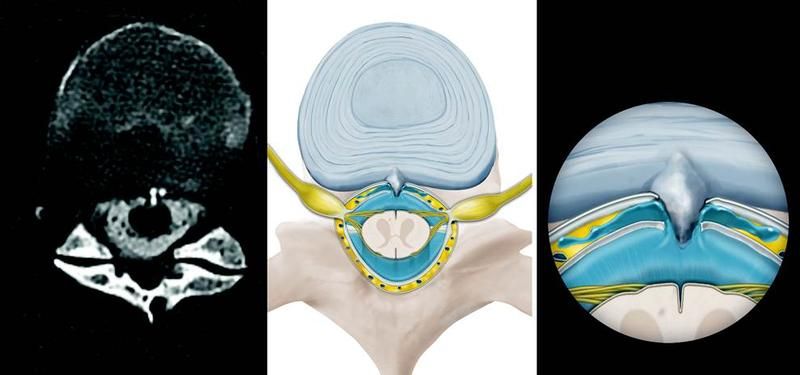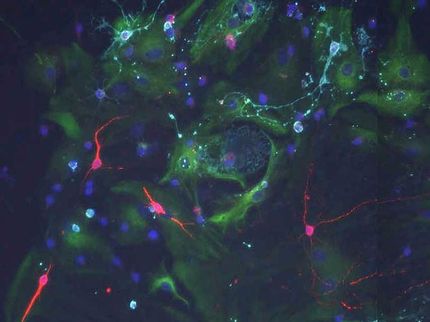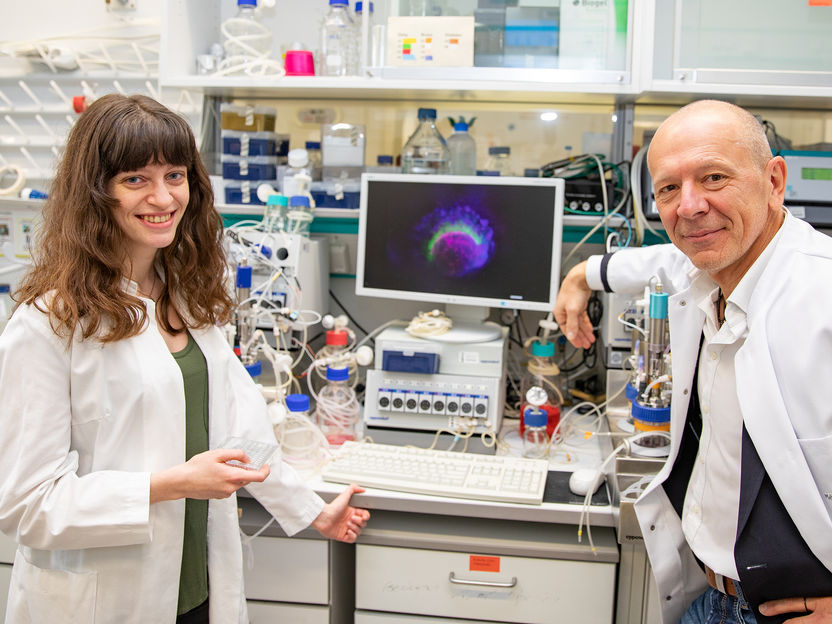When the brain is high and dry
Advertisement
Previously, the cause of the illness was often unknown. Neurosurgeons in Bern have now simultaneously found the cause of spontaneous intracranial hypotension and the solution.

A calcified microspur cuts open the nervous tissue cover (dura) like a sharp knife. Cerebrospinal fluid then leaks when standing up and those affected suffer the worst headaches.
Neurochirurgie, Inselspital, Universitätsspital Bern
Fluid protects our brains and spinal cords. If it is lost and can no longer be reproduced, the brain is literally high and dry. Those affected will then suffer from severe headaches that are only relieved by lying down. Affected patients can develop nausea, stiffness in the neck, spells of dizziness, inability to work and dangerous bleeding. This condition frequently occurs spontaneously and with no apparent cause.
Tiny Spurs Damage the Nervous Tissue Cover
Using the latest imaging processes and microsurgery, neurosurgeons, neuroradiologists and neurologists at the University Neurocenter in Bern have found tiny, calcified extensions of intervertebral discs on the spines of people affected. These spurs bore holes in the nervous tissue cover (dura) that protects the cerebrospinal fluid.
The resulting leak was found in most patients in the thoracic spine or the lower cervical spine. In a study, the doctors examined 14 of 69 patients with particularly persistent cases of the illness using microneurosurgery. In all patients operated on, the spur could be removed immediatelty after diagnosis and the leak could be stopped.
Diagnosis and Cure in One Operation
Study director Jürgen Beck describes the discovery as a turning point for the patients: “The illness is often severe and severely debilitating. Now we have been able to show how the leaks occur within the system and at the same time provide a solution. This is attracting patients from all over the world.“
The success rate of the new operation method speaks for itself: The neurosurgeons in Bern were able to cure 93 per cent of patients with microspurs. As a result, they are already receiving one third of their referrals from abroad. Beck dedicates one day a week just to patients suffering from intracranial hypotension.




























































